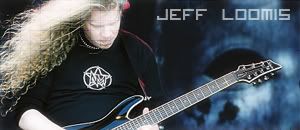By Thursday morning the death toll from the Dec. 26 tsunami stood at more than 81,000, with the Red Cross predicting it could pass 100,000 once the outlying islands of India are fully checked. A UN official said the toll in Indonesia alone could amount to 80,000.
The World Health Organization says up to five million people are in urgent need of clean water, food and sanitation.
The tsunami was caused by an earthquake off Indonesia's Sumatra island that measured 9.0 on the Richter scale. Worst hit by the resulting waves were Indonesia, Sri Lanka, India and Thailand.
Four nations, including one that suffered enormous losses of its own, have formed a coalition to co-ordinate relief and reconstruction efforts in South Asia.
President George W. Bush says the United States will join Australia, Japan and India in providing damage assessment teams and military manpower.
"I'm confident more nations will join the group in short order," said Bush.
The outgoing U.S. Secretary of State Colin Powell is co-ordinating relief assistance in the United States. He and his Indian, Japanese and Australian counterparts have been in touch with UN Secretary General Kofi Annan to see what they can offer.
World leaders have pledged hundreds of millions of dollars in aid to provide relief to the survivors.
And some of that aid is already arriving.
Water purifiers and bags of lentils are among the supplies that were delivered to the devastated west coast of Sumatra in Indonesia. Cargo planes have been coming in with goods they hope will help survivors of the catastrophe.
But there are also reports of outbreaks of disease.
Sri Lanka says it is reporting its first cases of diarrhea, and paramedics in southern India are vaccinating as many as they can against cholera, typhus, hepatitis A and dysentery. Bleaching powder is being spread on beaches where many of the bodies were found.
A mobile surgical hospital and medical personnel have arrived in the Sri Lankan capital.
There are also reports from within Sri Lanka of a potential ethnic conflict in the midst of attempts to distribute aid on the stricken island.
A convoy of trucks loaded with rice, sugar, tents and other essentials entered Tamil areas of the country, only to be forced to head for predominantly Sinhalese areas by mobs and low-ranking government officials.
Meanwhile, thousands of people remain unaccounted for in India's remote Andaman and Nicobar islands. The estimated death toll on the archipelago now accounts for almost half of the Indian toll of nearly 11,000 deaths.
A helicopter pilot who flew over the islands near Nicobar, said that he could see no traces of villages or houses. "There is nothing out there," he told the Australian Broadcasting Corporation.
It is believed the pilot was referring to flattened villages that contained 30,000 people before the tsunami struck. But with communication and transport links broken, it remains impossible to know the true extent of the island's catastrophe.
One of the men in charge of relief efforts, Brig. J. Davidos, has said rescuers cannot see light anywhere.
In Indonesia, troops have been mobilized to help the massive relief effort underway to help tsunami victims in the province of Aceh.
Rescue workers and aid agencies are only beginning to realize the full scale of the disaster in the province. At least 40,000 people are dead, but the fate of 100,000 more on Aceh's west coast is still unknown.








 Reply With Quote
Reply With Quote



 actually it makes me think).
actually it makes me think).







Bookmarks